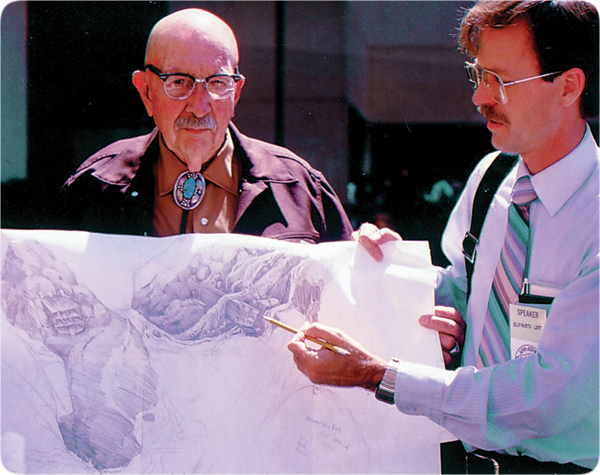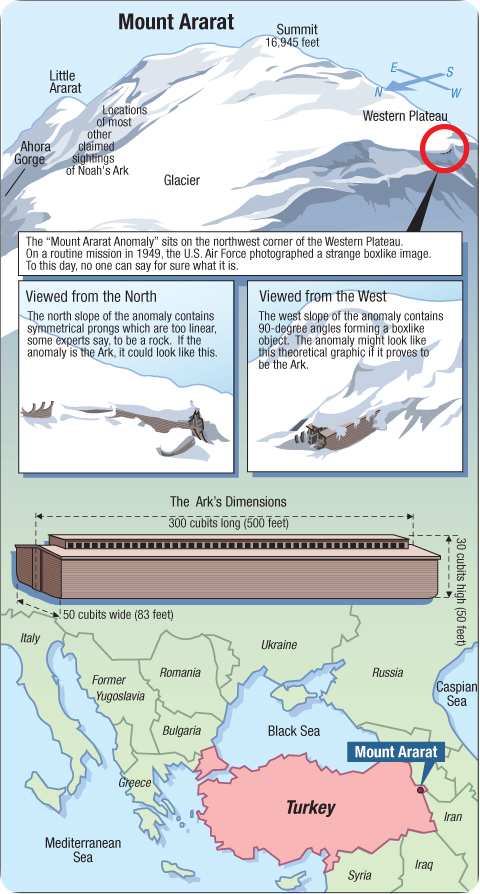Below is the online edition of In the Beginning: Compelling Evidence for Creation and the Flood,
by Dr. Walt Brown. Copyright © Center for Scientific Creation. All rights reserved.
Click here to order the hardbound 8th edition (2008) and other materials.
100. Ed Davis
In July 1943, Sergeant Ed Davis (U.S. Army) was stationed in Iran. There, he developed a close friendship with some Lur tribesmen who said they knew the location of Noah’s Ark. (The Lurs are related to the Kurds.) When Davis asked to see the Ark, they first took him to their village. There, Davis claims he saw items from the Ark: a cage door, latches, a metal hammer, dried beans, shepherd staffs, oil lamps, bowls, and pottery jars still containing honey. This Muslim tribe considered it a religious duty to prevent outsiders from seeing the Ark, even if killing was necessary. However, their close friendship with Davis made him an exception.

Figure 38: Ed Davis with Elfred Lee in 1986. Artist Elfred Lee (right) drew this picture based on the claimed eyewitness account of Ed Davis (left). In 1970, Lee also drew a picture of the Ark in the presence of another claimed eyewitness, George Hagopian. (The Ark depicted on page 51 is based on Lee’s drawing for Hagopian.) Because both Hagopian and Davis were present as Lee made each drawing, they requested many on-the-spot changes. As Lee was completing Davis’ drawing, he suddenly felt that each man was describing the same object. This, Lee said, made the hair on the back of his neck stand up.
Tribal leader Abas-Abas and his seven sons took Davis on a three-day climb up the northeast side of what Davis thought was Mount Ararat. (Based on Davis’ description of his trip, he probably was on a mountain in Iran.)a Steep, slick rocks, made worse by cold rain, prevented them from getting closer than one-half mile from the Ark. Two broken portions of the Ark, lying on their sides and one-third of a mile apart, were visible during moments when fog and clouds lifted. Wooden beams, three decks, and rooms were seen. Abas-Abas told Davis other details: the Ark’s wood was extremely hard; wooden pegs were used in its construction instead of nails; its large, side door opened from the bottom outward (like a garage door); and the human quarters consisted of 48 compartments in the middle of the top deck. In 1986, several dozen Ark researchers questioned Davis extensively, and in 1989 he passed a lie detector test.b (On two occasions, once in his home, I also questioned Davis.)
